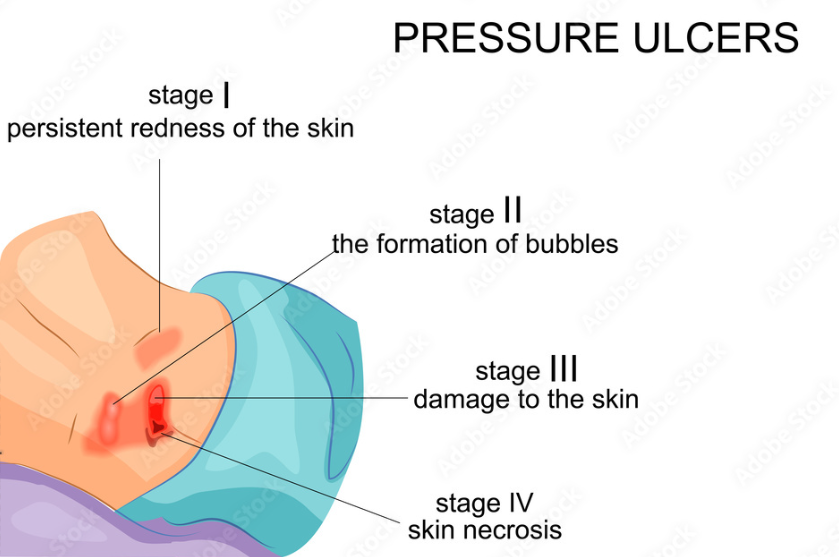
c: Preventing Painful Skin Damage
Pressure ulcers, commonly referred to as bedsores or pressure sores, are debilitating skin injuries that can have severe consequences for those who develop them. These wounds occur when pressure is exerted on the skin and underlying tissues for an extended period, leading to reduced blood flow and tissue damage. Understanding pressure ulcers, their causes, prevention, and treatment is crucial for healthcare providers and caregivers.
Causes and Risk Factors:
Pressure ulcers often develop in individuals who are immobilized or have limited mobility. Contributing factors include:
- Prolonged Pressure: Staying in one position for too long, especially in a bed or wheelchair, can create pressure points on the body.
- Friction and Shear: The skin can become damaged from friction (rubbing) or shear (sliding) when moving or being repositioned.
- Moisture: Skin that is moist from urine or sweat is more susceptible to damage.
- Reduced Sensation: Conditions like diabetes or spinal cord injuries can diminish the ability to feel pressure or pain.
Stages of Pressure Ulcers:
Pressure ulcers are classified into stages based on their severity:
- Stage 1: The skin is intact but shows redness and warmth. It may feel firmer or softer than surrounding skin.
- Stage 2: The skin has partial-thickness loss, involving the epidermis (outer layer) and possibly the dermis (deeper layer).
- Stage 3: Full-thickness loss of skin, exposing fat tissue. The ulcer may have a crater-like appearance.
- Stage 4: The ulcer extends even deeper, affecting muscles, tendons, or bones. Infections and complications are more likely at this stage.